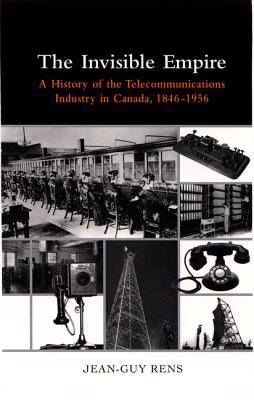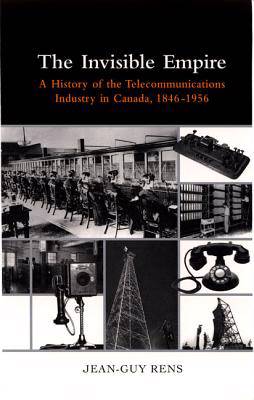
- Afhalen na 1 uur in een winkel met voorraad
- Gratis thuislevering in België vanaf € 30
- Ruim aanbod met 7 miljoen producten
- Afhalen na 1 uur in een winkel met voorraad
- Gratis thuislevering in België vanaf € 30
- Ruim aanbod met 7 miljoen producten
Zoeken
The Invisible Empire
A History of the Telecommunications Industry in Canada, 1846-1956
Jean-Guy Rens
Hardcover | Engels
€ 186,95
+ 373 punten
Omschrijving
It is impossible to understand Canada without looking at the history and development of its telecommunications industry. In the nineteenth century Canada was the only country in the world constructed on the basis of technology - first the railway and, in its shadow, telegraphy. In the 1930s this technological nationalism came of age and telecommunications became Canada's national technology. The Invisible Empire provides the first overview of Canadian telecommunications, from the laying of the first telegraph line between Toronto and Hamilton in 1846 to the separation between Nortel - then known as Northern Electric - and the American Bell System in 1956. Rens shows us that Louis Riel was beaten as much by telegraphy as by the Canadian army, and how Bell Canada - then known as Bell Telephone - escaped nationalization by Sir Wilfrid Laurier's government. He follows the construction of the first trans-Canadian telephone line in the midst of the Great Depression of the 1930s and explains why, in the context of the Cold War, Canada built an electronic Great Wall of China in the far North. Rens examines the context that allowed the telecommunications industry to take hold so successfully in Canada and explores how the industry grew so quickly and managed to escape American domination. He situates Canadian accomplishments in telecommunications by comparing them with those of other countries.
Specificaties
Betrokkenen
- Auteur(s):
- Uitgeverij:
Inhoud
- Aantal bladzijden:
- 320
- Taal:
- Engels
Eigenschappen
- Productcode (EAN):
- 9780773520523
- Verschijningsdatum:
- 10/07/2001
- Uitvoering:
- Hardcover
- Formaat:
- Genaaid
- Afmetingen:
- 161 mm x 240 mm
- Gewicht:
- 752 g

Alleen bij Standaard Boekhandel
+ 373 punten op je klantenkaart van Standaard Boekhandel
Beoordelingen
We publiceren alleen reviews die voldoen aan de voorwaarden voor reviews. Bekijk onze voorwaarden voor reviews.











